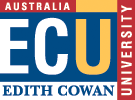COURSE INFORMATION
Disclaimer
This course information may be updated and amended immediately prior to semester. To ensure you have the correct outline, please check it again at the beginning of semester.
| Q65 / H53 Master of Arts (Visual Arts) | ||
INTRODUCTION The Master of Arts (Visual Arts) provides studio based studies at the highest appropriate academic level in visual arts, through coursework, research, a dissertation and an exhibition, which prepare artists for independent studio practice and thus contribute to the development of Western Australian visual culture.
The course is based on the view that artistic practice comprises both studio practice and theoretical investigations, both are to be understood as research. The course has been constructed to reflect the intertwined character of theory and practice. For example, the studio units contain 'studio theory' elements, which are fundamentally aimed at the conceptual development of students through discussion with lecturers, assisted by recommended readings, the keeping of journals and technical notes, and the writing of an assessment statement outlining the aims and objectives of the semester's work, plus an indication of how students' perceive their success in achieving them.
The first half of the course is designed not just to consolidate students' pre-existing skills but to extend their skills base and theoretical knowledge, enabling them to understand their work better within a larger historical and social context. The last half of the course represents a sustained opportunity for the production of new work, both written and studio and building on the discoveries made while undertaking previous units.
The course is designed for individuals who define themselves primarily as artists, and who either have established a credible track record as practising artists or have shown a level of achievement and dedication in prior study, which indicates a strong potential for a career based around practice as an artist. It is therefore expected that the majority of a student's time will be dedicated to the practical component of the program (Studio units 1-4). It will provide studies at the highest appropriate academic level for studio-based study in the visual arts; and through a course of study, incorporating research, a dissertation and an exhibition, the course will prepare artists for independent studio practice.
OBJECTIVES On completion of the course, graduates should be able to:
TEACHING METHOD Whilst the course is appropriately described as a Master by coursework (plus dissertation and exhibition), it has some of the characteristics of a Master by Research, the course comprising for the most part units which are distinguishable by their aims and objectives rather than their cognitive content, which is to be defined in large measure by student need. The course accordingly aims to balance individual learning with group activities, to allow students to pursue their own directions, but with a concomitant provision of regular opportunities for interchanging ideas with other students as well as staff in group sessions. Cultural Studies, Art History and Theory and Aesthetics and Criticism are enabling studies which encourage all students to engage in constructive criticism of their own art works, to see their work in context and to present information and arts' advocacy in a clear and rational manner.
ADMISSION REQUIREMENTS Applicants must apply directly to the University. The interviewing panel will normally comprise the Master of Arts course coordinator and two studio lecturers from the School. Qualified applicants will subsequently be invited to submit a portfolio, a proposal of the practical project to be carried out on the Master program, and a statement outlining their reasons for seeking admission.
ELIGIBILITY Candidates are expected to:
CRITERIA Admission to the Master of Arts program will be based on the following criteria:
ARTICULATION Students with a 1st Class honours or post graduate diploma in Visual Arts may be eligible to articulate into year two of the MA (Visual Arts) program.
COURSE DURATION AND MODE OF DELIVERY The duration of the course which is to be offered in the internal mode only, is two years full-time or the part-time equivalent. Students who are unable to proceed beyond the first year of the course may be eligible for the award of a Post Graduate Diploma of Arts (Visual Arts).
MODE OF STUDY The course is available by full-time or part-time study.
STUDIO AREAS Students will have access to and may work in any of the specialist areas offered in the School of Contemporary Arts. Any student wishing to propose practical studio projects in an area outside the above areas may negotiate for expert supervision within other areas of the Faculty.
COURSE STRUCTURE |
||
| Disability Standards for Education (Commonwealth 2005) | ||
| For the purposes of considering a request for Reasonable Adjustments under the Disability Standards for Education (Commonwealth 2005), inherent requirements for this subject are articulated in the Unit Description, Learning Outcomes, Graduate Attributes and Assessment Requirements of this entry. The University is dedicated to provide support to those with special requirements. Further details on the support for students with disabilities or medical conditions can be found at the Student Equity, Diversity and Disability Service website: | ||
| http://intranet.ecu.edu.au/student/support/student-equity | ||
Last Updated - Higher Education: 11/18/2004
